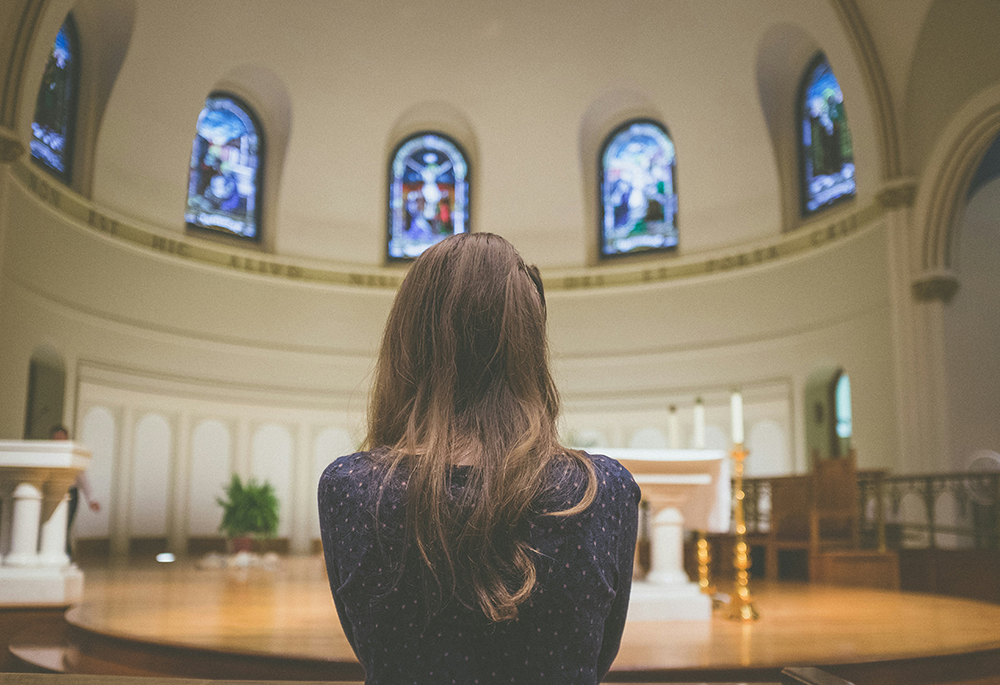Modern, young religious life demystified in ‘For Love of the Broken Body’
Julia Walsh’s For Love of the Broken Body: A Spiritual Memoir is a raw account of her early years preparing to become a Catholic sister. Walsh begins the book with the chilling story of a terrible accident that occurs in the first month of her novitiate. (Those who are less familiar with religious life might consider […]



Julia Walsh’s For Love of the Broken Body: A Spiritual Memoir is a raw account of her early years preparing to become a Catholic sister. Walsh begins the book with the chilling story of a terrible accident that occurs in the first month of her novitiate. (Those who are less familiar with religious life might consider starting with the glossary at the back.) She makes a short visit to her family’s ancestral farmland soon after beginning the period of prayer and study required of those seeking to profess vows in an institute or order of Catholic religious.
Seeking a quiet place to pray and journal, Walsh heads toward a scenic overlook. The bucolic setting stands in sharp contrast to the challenging months of fracture and mending that lie ahead for her when the ground gives way, and she lands face down in a shallow stream far below. This portion of Walsh’s tale unfolds at a rapid clip, punctuated by short, descriptive sentences that spare no details. “My tongue feels jagged teeth. I taste mucus and blood,” Walsh writes.
She then pivots from detailing the broken bones and wounds she suffered to sketch out how she came to be on the bluff that day. Her early college years, youthful experiences of church, a close-knit family and a burgeoning desire to experience more of God all bring her first to a year of service with an intentional community; and, soon after, to exploring what it would be like to be a Catholic sister.
Just as she recounted her injuries, hospitalization and healing, Walsh similarly spares no detail of her inner struggle to be seen and valued by men. Prior to religious life, this grappling lands in the arena of the commonplace, the stuff of paperback novels and Top 40 songs. However, once Walsh begins the discernment process for religious life, which will culminate in professing vows that include celibate chastity, the context for this grappling changes.
Memoirs can normalize common human experiences, or give the reader a peek behind the curtain of a closed world or insular system. The former is likely to be the draw for many of those who pick up For Love of the Broken Body. Walsh’s story gives shape to questions such as: What is it like to be a “nun” in the 21st century? What happens when you are preparing to commit to a life without individual attachments and meet someone you could see yourself marrying? How does someone in discernment handle doubts about making a lifelong commitment to a unique way of being?
With zeal and a hearty dose of humility, Walsh discloses her innermost thoughts. She writes ecstatically of her hunger for Christ and a longing for union. Sometimes, that union is metaphysical or spiritual, in others, it is decidedly physical. She imagines what would occur in a sexual encounter with a man she has fantasized about for many years. Some might be startled at what they hear in the context of religious life. Other readers, perhaps seasoned by their own experience of being human, will recognize the innate desire to be seen, to be touched, to be held, to share an intimate connection — desires from which Catholic religious are not excluded.
Given its themes, For Love of the Broken Body might find a place on the bookshelf next to Redeemed: Stumbling Toward God, Sanity, and the Peace That Passes All Understanding; Accidental Saints: Finding God in All the Wrong People; Wild Mercy: Living the Fierce and Tender Wisdom of the Women Mystics; River of Fire: My Spiritual Journey; and Cloistered: My Years as a Nun. All six memoirs by women trace threads of spiritual awakening and interior movement amid the very real messiness of human bodies, religious institutions, desire, grief and pain.
While similarly candid, authors Heather King, Nadia Bolz-Weber, Mirabai Starr, Sr. Helen Prejean and Catherine Coldstream spend more pages on the integration of lessons learned through this sacred/profane dichotomy than Walsh does. This is unfortunate. Presumably, there is much more to say post-vow profession when the commitments take on real flesh in day-to-day living. One might imagine Walsh having many more experiences of loving and being loved that exist within the framework of the vows, and thus deepening and widening her understanding of agape.
Walsh does a fine job of explaining the many features of Catholic women religious and the nature of an apostolic calling (versus cloistered contemplatives). She illuminates the necessity of being companioned in discernment by wise formators who can situate the doubts and questions of the young into the larger story of a long life. Ultimately, one concludes For Love of the Broken Body with the sense that Walsh is authentically and truly herself, something that people of all faith backgrounds and experiences can appreciate.














